Stac Pollaidh (pronounced "Stac Polly") is a mountain located in the Northwest Highlands of Scotland, in the region known as Wester Ross. It lies near the village of Achiltibuie and is part of the Inverpolly area, which is famous for its dramatic landscape and distinctive peaks. Stac Pollaidh is relatively small in terms of height, standing at 612 metres (2,008 feet), but it offers breathtaking views and a popular, scenic hike with a well-marked path to the summit ridge. Its rugged and rocky features make it one of Scotland's most iconic hills.
Like most Gaelic names, or combinations of Gaelic and Norse (as is with this one), the meaning of Stac Pollaidh is purely descriptive. It means ‘Steep rock at the pool’. The pool I believe it refers to is Loch Lurgainn, which is quite a big loch immediately below the hill. But how would I describe it?
Some people call Stac Pollaidh a modern day ‘sacrificial mountain’; ie: somewhere people can walk easily. There is a car park and decent path, so it takes the human foot traffic leaving the surrounding hills quieter. It is accessible by hill standards and has all the aspects of the nearby bigger hills, but with slightly less effort to get to the summit. There might be some snobbery surrounding its popularity but there is more to this mini mountain for many people. The path is worn not only by footprints but by innumerable thoughts and memories.
I led a group of people up here recently on a guided walk as part of my Molehill to Mountain series. These have been running once a month this summer, increasing in ascent each time and, during the Stac Pollaidh walk, I realised that I had somehow forgotten how much I love this hill.
The first time I climbed Stac Pollaidh I was a child, coming over from the east coast of Sutherland on a hot summer’s day. At the time there was no car park or path, just a zig-zagging sheep track. I remember climbing on the grippy sandstone and the feeling of the air up there. I remember the paddle in Loch Lurgainn afterwards. These memories of days out can last a lifetime and I am reminded that on ranger walks I can facilitate people’s experience being in the hills for the first time, or the first time in a long time.
Since my childhood, I have enjoyed many times on Stac Pollaidh from running up it in the full moon, New Years Day walks with friends, leading school children up, taking myself off on a close and familiar first expedition away from my young baby, taking that baby up in a carrier then himself walking on the paths as a toddler. I have led trips for visitors from near and far and I still have not a slight bit of boredom when it comes to the hillside.
It is always different, the weather, the light, the wildlife, the people you meet on the way with a togetherness and mutual unspoken understanding of why we are going up the hill. Maybe we can’t put it into words anyway.
A visit to this hillside reveals some incredible sculptural forms of Torridonian Sandstone originally laid down in rivers a mere 900 million years ago and then shaped from the freeze -thaw action of glaciers. Stac Pollaidh stuck out above the glacier as a ‘Nunatak’ and that gives it its distinctive shape.
I don’t want to downplay the terrain going up Stac Pollaidh, you should always go prepared to this hill with the correct walking gear, telling someone where you have gone and when you plan to get back. Some parts of the path are fairly steep but in good conditions the walk is achievable for first timers and old timers alike.
From the Dragon’s Back eastern summit there are views of all my favourite hills Cùl Beag, Cùl Mòr, Suilven, Quinag, Sgùrr an Fhìdhleir. None of them are Munros but all to be taken seriously none-the-less. They are characterful hills and I know them all from underfoot and from different angles. Looking at them, I feel grounded and at home. Beyond the hills, the Summer Isles are scattered in the sea. All my favourite hills have a sea view.
The west summit involves scrambling and a bad step at the top and is ill advised to attempt without protection, as a fall from here would be very serious indeed.
It is no wonder that this collection of hills are all part of a National Scenic Area and a UNESCO Geopark. Many of them, including Stac Pollaidh, are also part of national and international designations for invertebrates, birds and habitats.
Its possible to get sight of a golden eagle, while ravens and buzzards circle the rugged terrain. On the ground, you may encounter red deer grazing or, with luck, spot elusive mountain hares or red fox. In wooded areas near the base, pine martens occasionally appear. Bird enthusiasts might hear the distinctive calls of ptarmigan and red grouse in the uplands. On warmer days, common lizards bask on rocks, and there's even a chance of spotting an adder in the heathland. Alongside the wildlife, the area is rich with flora, such as heather, mosses, and summer wildflowers, adding to the beauty of this iconic landscape.
Cùl Mòr is also a striking mountain located nearby. Standing at 849 metres (2,785 feet), it offers stunning views over the surrounding landscape, including nearby lochs, coastline, and other iconic peaks like Suilven and Stac Pollaidh. Though not the tallest in the region, Cùl Mòr's relatively remote location and dramatic terrain make it a rewarding climb for hikers and outdoor enthusiasts. The ascent is challenging but manageable, with a mix of rocky paths and open moorland, providing a true taste of the wild Scottish Highlands.
If you would like to join me, I will be leading a full day walk to the higher heights of Cùl Mòr. It is the next hill in my Molehill to Mountain series on the 19th September 2024 and another special one topped with Torridonian Sandstone sculptures. You can book on to this walk here.
The walk up Cùl Mòr involves just over 800 metres of ascent. We will also expect to see some incredible flowers, lichen and natural sandstone sculptures and when we lift our heads, the awesome hills surrounding this one, it is a gem of a hill in all scales. Participants should have done some hill walking recently and a good level of fitness and the correct clothing, waterproofs and footwear to come with us.
From the top of Cùl Mòr looking down - Stac Pollaidh will seem a bit smaller but always distinctive, connecting us to Earths deep timescales and present and past moments of our own short lives. And how to describe it? I am none the wiser, maybe ‘Steep Rock at the Pool’ is fine enough.
Jenny Grant High Life Highland Countryside ranger for Wester Ross holds a deep passion for the nature and heritage of Scottish Highlands. Her lifelong pursuit involves learning and teaching Highland ecology, embracing both scientific study and local wisdom. Jenny's holistic approach extends beyond academia; she immerses herself in nature through hikes, wildlife encounters, and community engagement. Her enthusiasm is infectious, often sharing insights and leading conservation efforts. Jenny embodies a commitment to understanding and preserving the diverse ecosystem around her, proving that ecological knowledge is not just learned but lived and cherished.




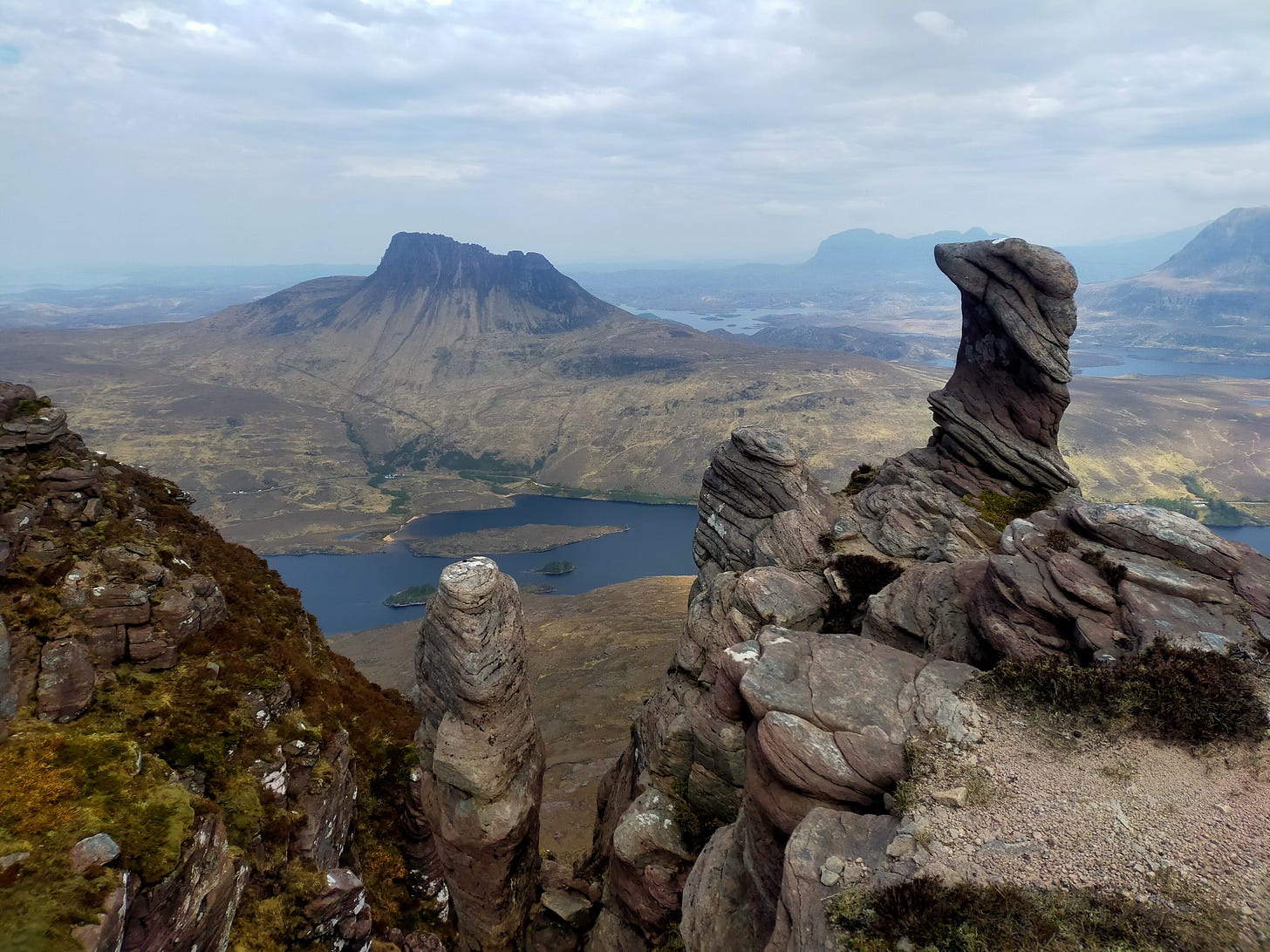
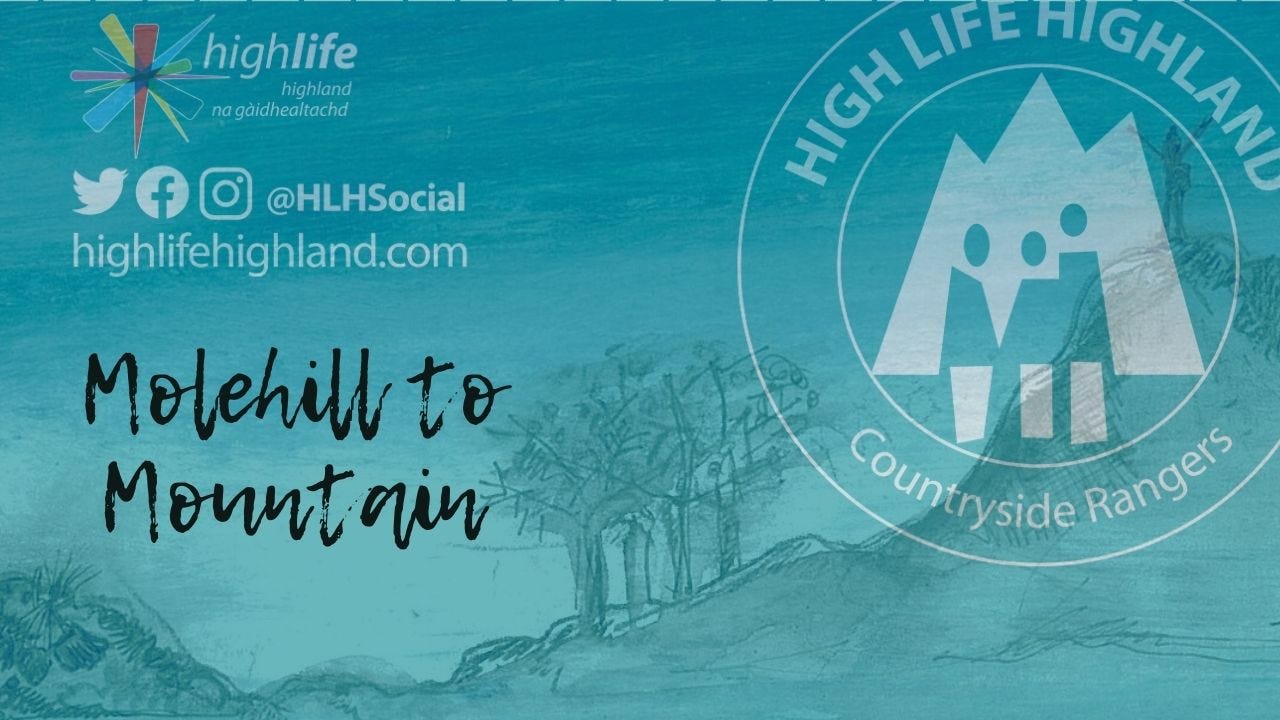
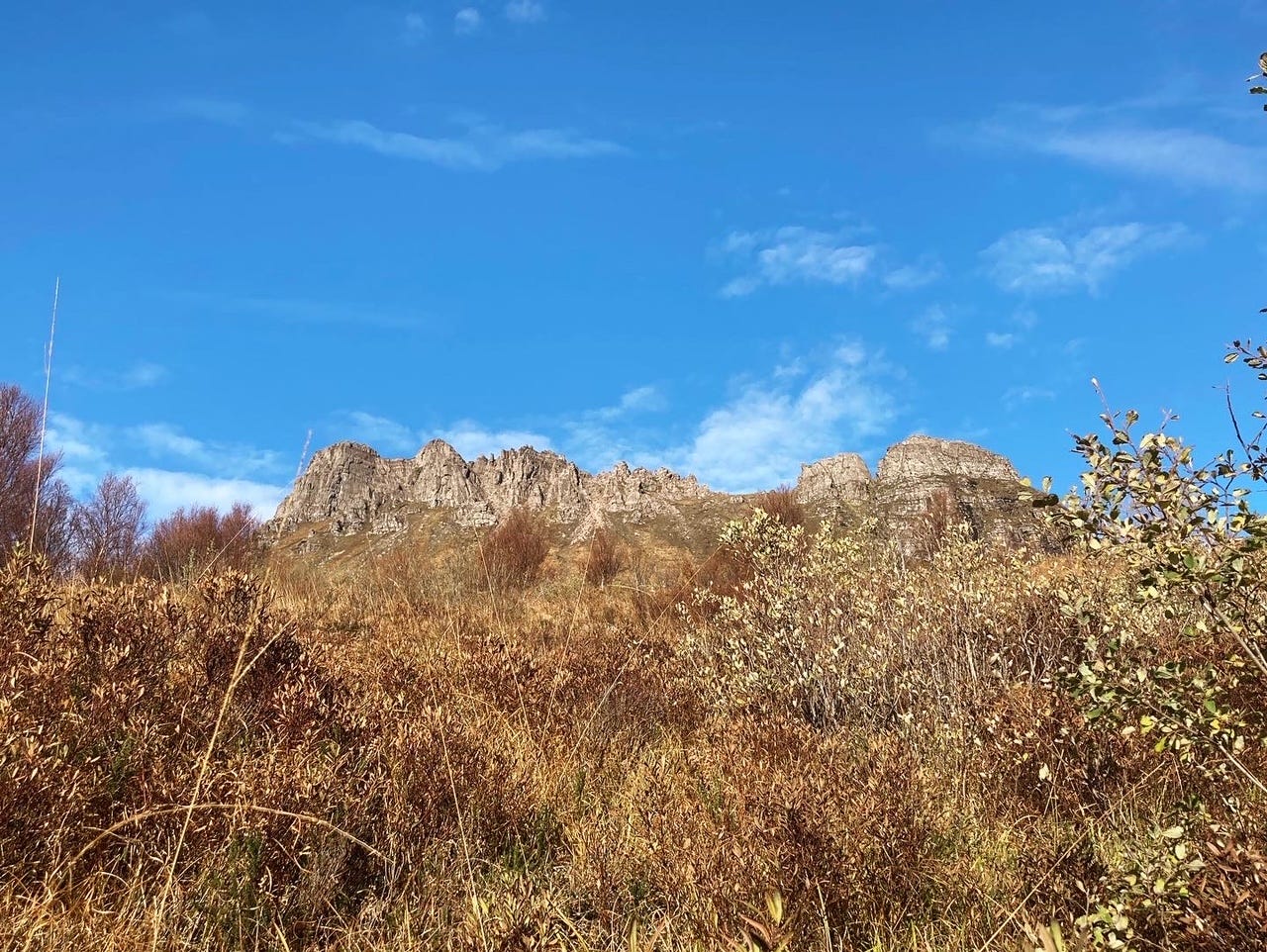

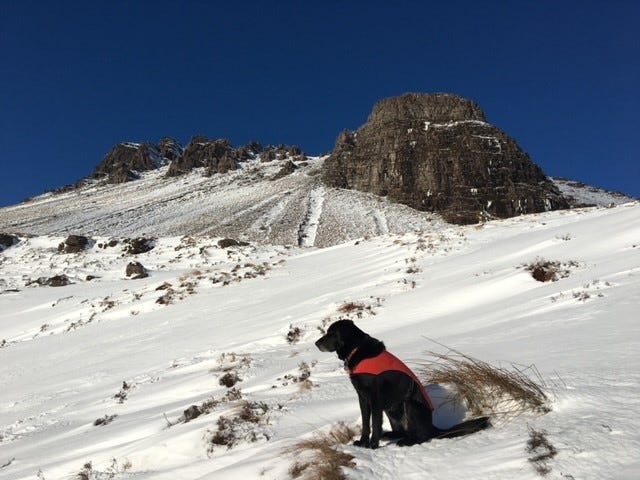
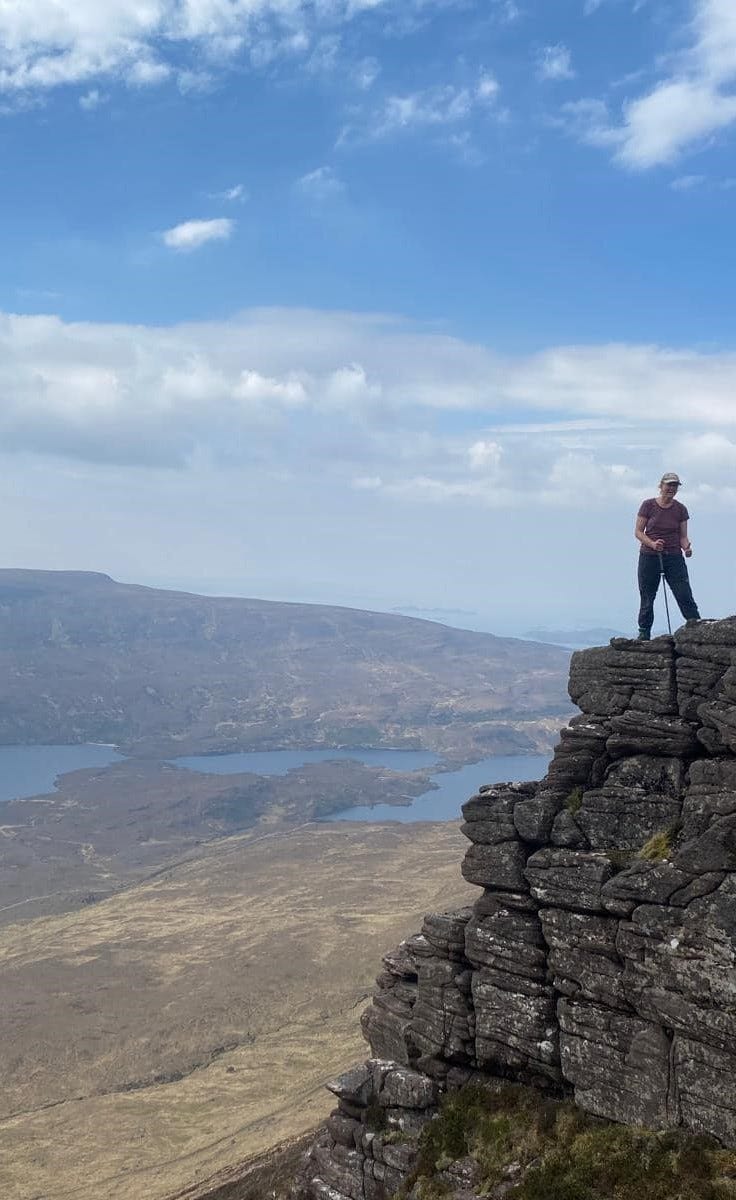
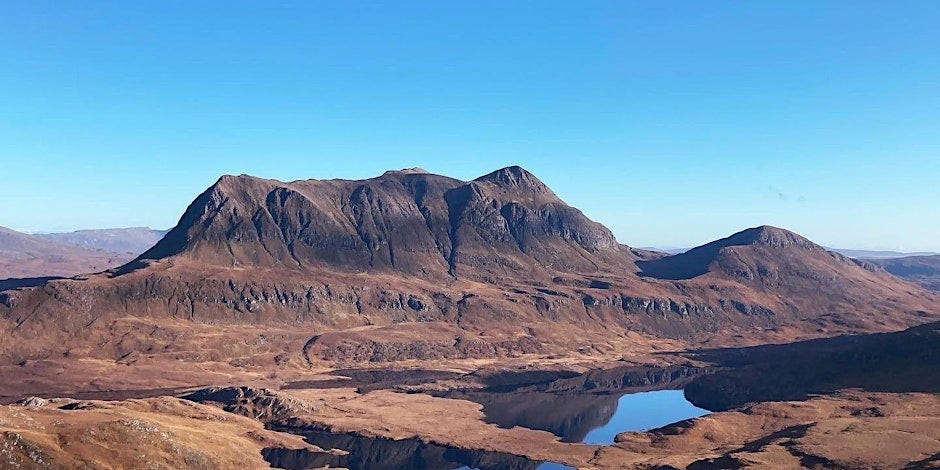
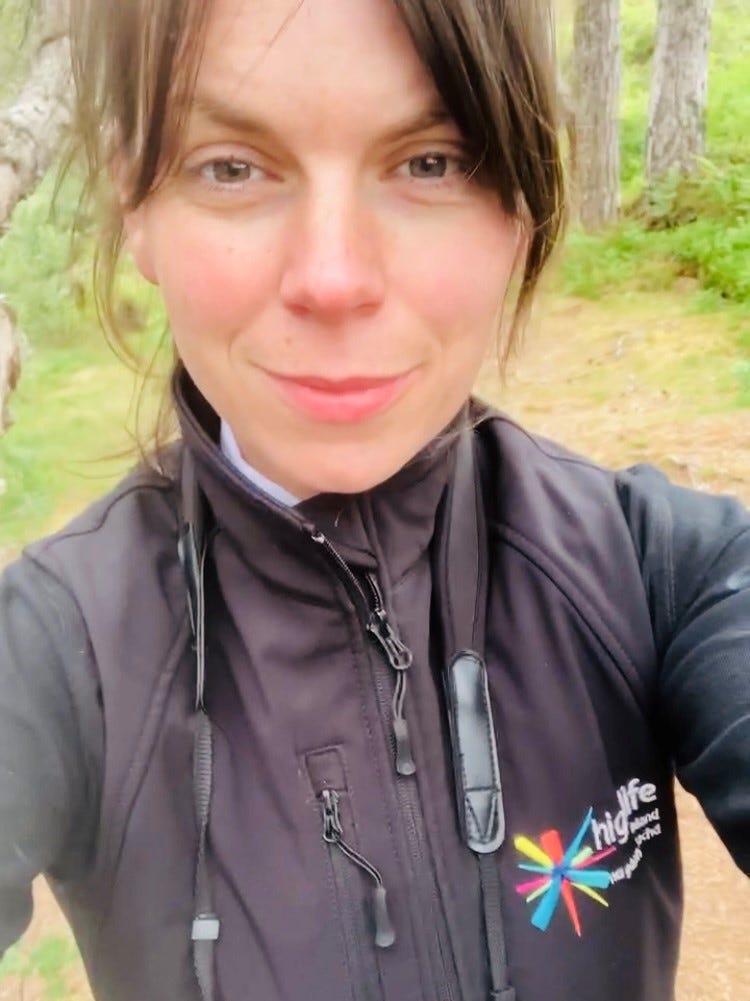
I hope I can join you one day. For now, I'll enjoy the posts, photos and notes on the flora and fauna.